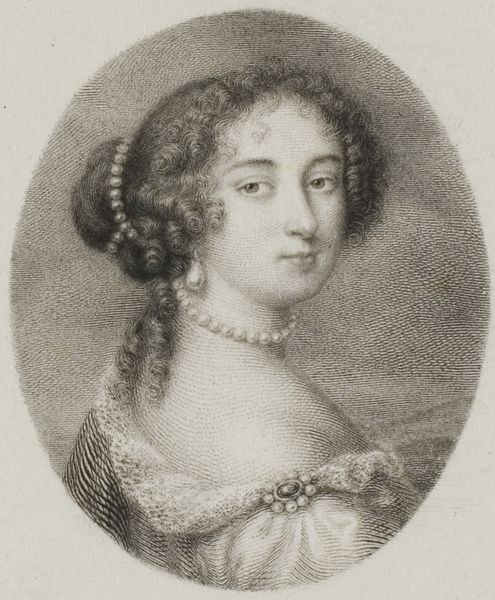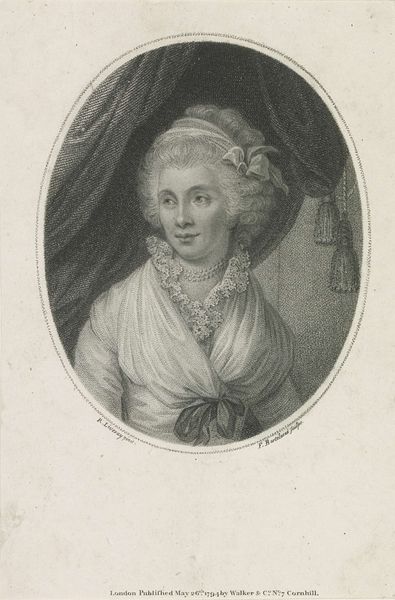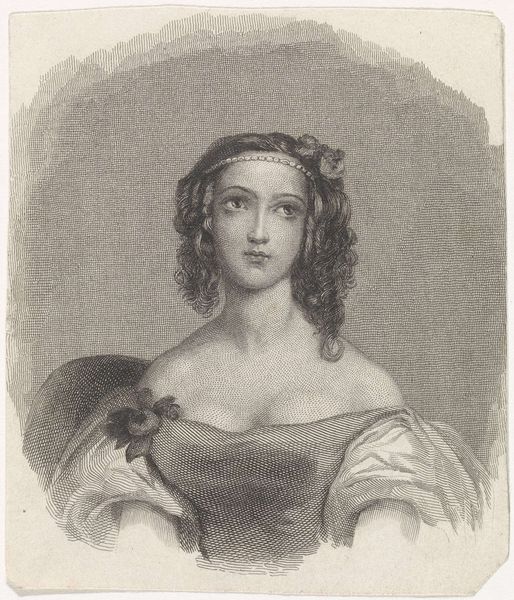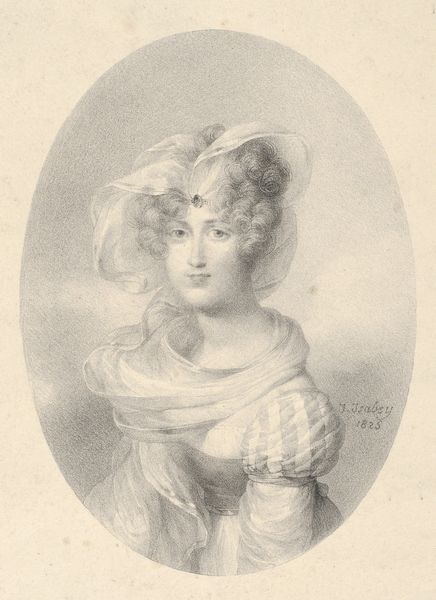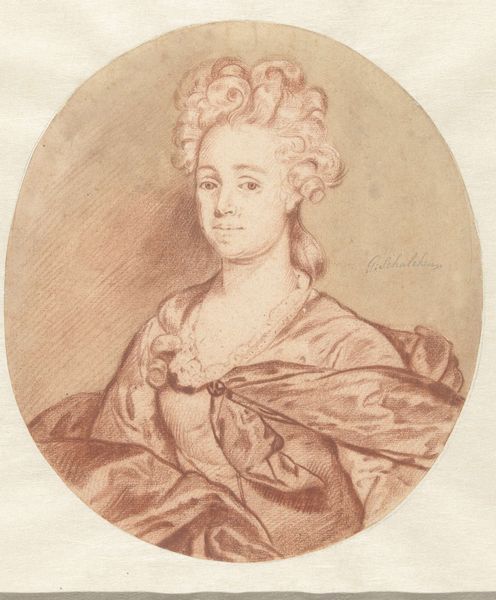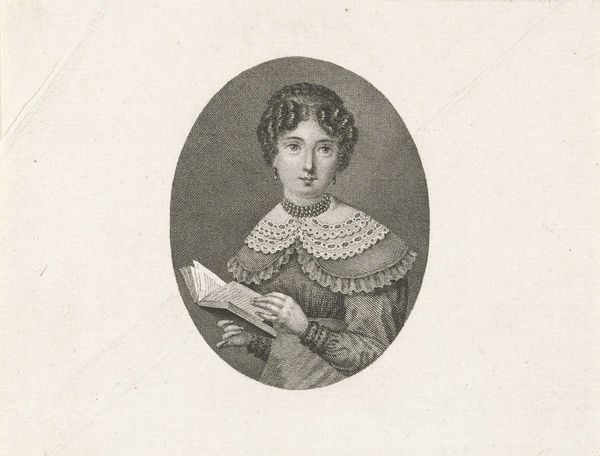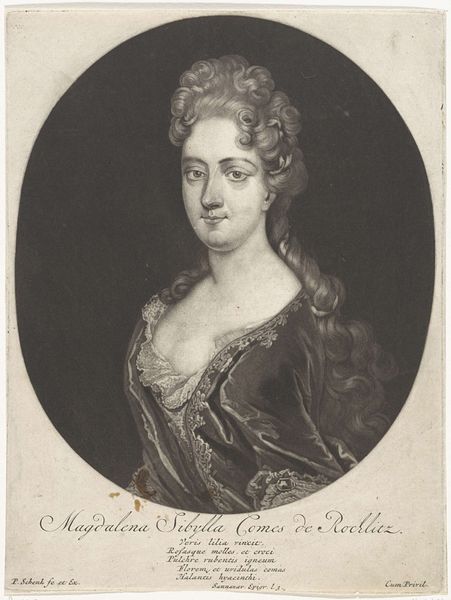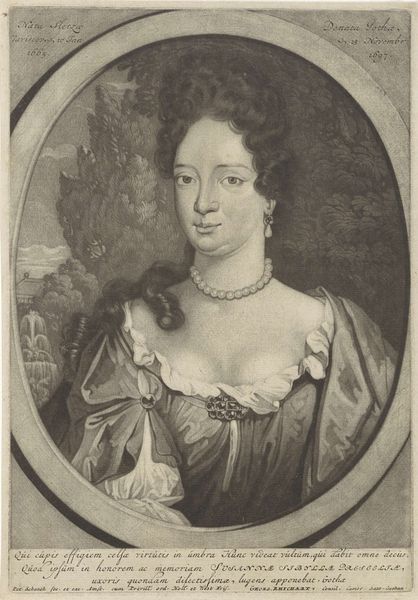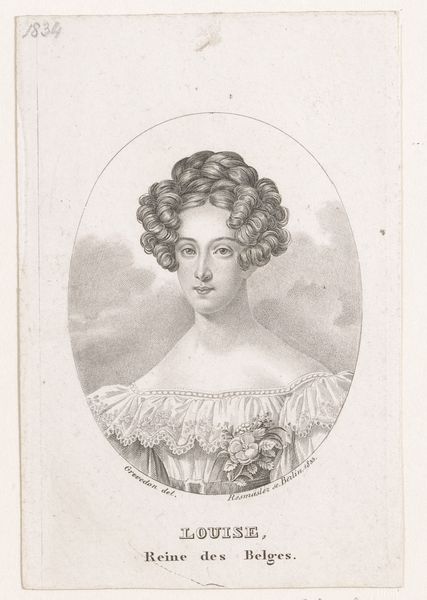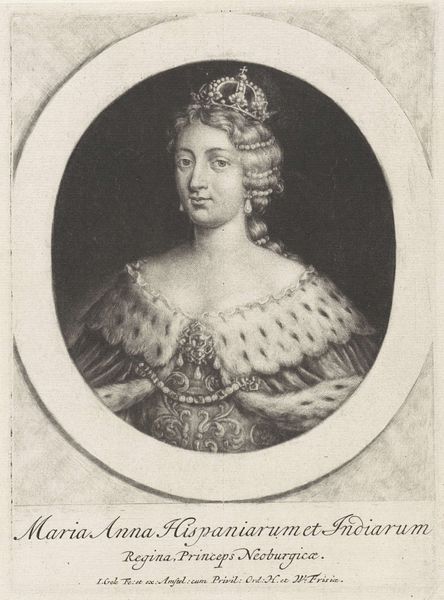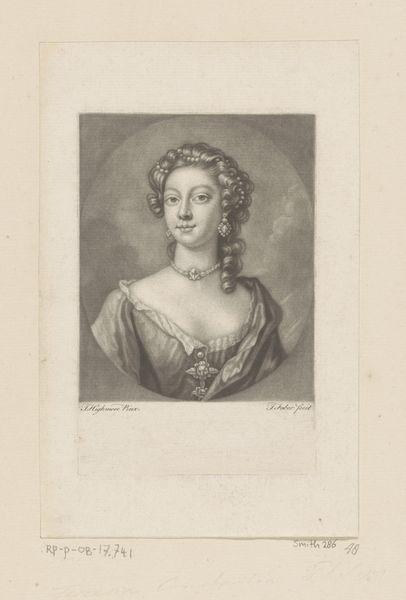
print, engraving
#
portrait
#
neoclacissism
# print
#
old engraving style
#
figuration
#
form
#
pencil drawing
#
line
#
history-painting
#
engraving
Dimensions: height 139 mm, width 89 mm
Copyright: Rijks Museum: Open Domain
Editor: So this is a print, an engraving actually, by Daniël Veelwaard, titled "Portret van Maria Louise van Savoye-Carignano." It seems to capture a certain delicate composure. What do you see in this piece, something created in the late 18th or early 19th century? Curator: Indeed. Look closely. It is fascinating how Veelwaard employs Neoclassical lines, which at this time harked back to Republican Rome in search of models of civic virtue and ideals of femininity and beauty. This is a portrait intended to signal status and moral uprightness through symbolic visual vocabulary, from her idealized features to her simple, elegant clothing. Editor: Right, it's interesting that you pick up on the ‘moral uprightness’ element because while her garb seems simple, there is a certain refinement that I can’t put my finger on… what would that be? Curator: It's subtle, yet profound. Consider the fabric itself. It has the soft appearance of muslin which at the time, because of its origins in India and Egypt, symbolized luxury and status and could easily trigger conversation around class, industry and imperialism. Similarly, notice the bow at her chest, an affectation in style that indicated a gentle persona and attention to decorum. It is, in essence, about constructed ideals through a visual language that was widely understood then, even if not explicitly stated. Does that make sense? Editor: Absolutely, the fabric acting almost as an unspoken heraldry. I had not considered the connotations of these visual signifiers in such a detailed fashion. It makes me look at portraiture in a completely different way. Curator: And I in turn get to revisit the silent dialogues contained within portraiture, and re-think their significance with renewed scrutiny.
Comments
No comments
Be the first to comment and join the conversation on the ultimate creative platform.
